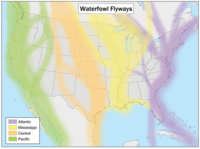
Photo from wikipedia
Edwardsiella tarda, a Gram-negative member of the family Enterobacteriaceae, has been isolated from many animal species worldwide, especially fish species. Its broad host range indicates the diversity in taxonomy, which… Click to show full abstract
Edwardsiella tarda, a Gram-negative member of the family Enterobacteriaceae, has been isolated from many animal species worldwide, especially fish species. Its broad host range indicates the diversity in taxonomy, which attracted the attention of many researchers. Here, we added genome of E. tarda strain isolated from freshwater fish to comparative genomics study for the first time. We sequenced and assembled the genome of E. tarda ASE201307 which was isolated from freshwater Asian swamp eel. ASE201307 genome contained a single circular chromosome of 3.68M with G+C 57.09% content. Comparative genomics including SNP calling, synteny block, Core/Pan genes analysis and phylogeny analysis was conducted among ASE201307 and other Edwardsiella strains isolated from different fish species. Results of SNP analysis and synteny block demonstrated the close relative of ASE201307, FL95.01 and DT which were all isolated from freshwater fish. In further analysis heat map of dispensable genes and phylogenetic tree, all E. tarda strains were divided into two groups. One was isolated from freshwater fish and the other was isolated from marine/migratory fish. Based on all studies above, we proposed the living environment of hosts as a new taxonomic character and divided E. tarda isolated from diseased fish into freshwater group and marine/migratory group.
Journal Title: Aquaculture Research
Year Published: 2018
Link to full text (if available)
Share on Social Media: Sign Up to like & get
recommendations!